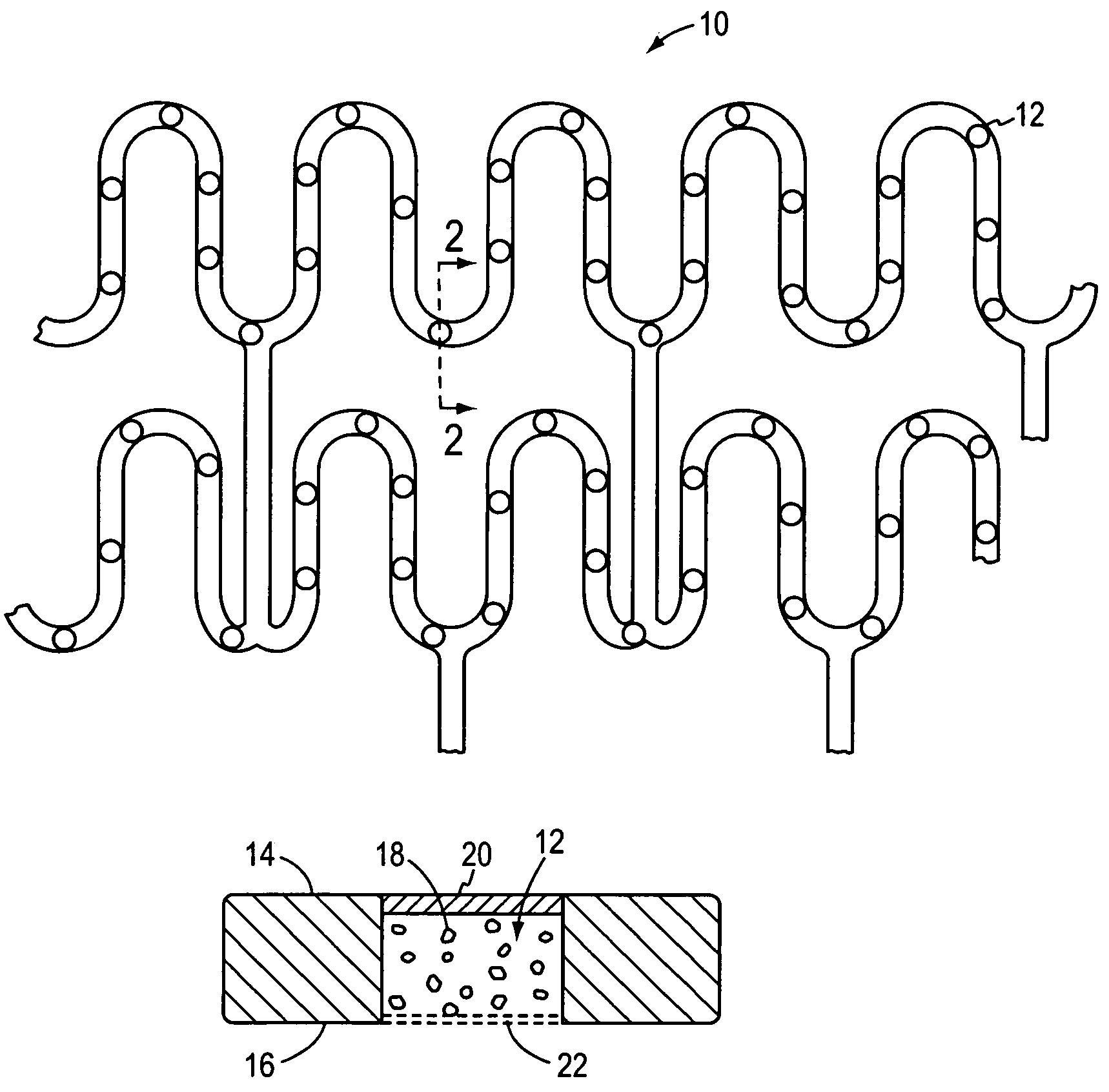Therapeutic cellular stent
- Summary
- Abstract
- Description
- Claims
- Application Information
AI Technical Summary
Benefits of technology
Problems solved by technology
Method used
Image
Examples
Embodiment Construction
[0021]In FIGS. 1 and 2, an illustrative stent 10 that may be used in accordance with the present invention is shown in the form of a mesh whose radial cross-section is collapsible for insertion into a blood vessel and is thereafter expansible (e.g., by inflating a balloon) into contact with the inner wall of the blood vessel to thereby secure the stent at a desired location. Stents of this general type are known in the art. As modified by the present invention, however, and as shown in cross-section in FIG. 2, a plurality of wells 12 are spaced along one or more portions of the stent and extend through the stent from an upper surface 14 to a lower surface 16. The wells carry charges of living cells 18 that are confined within the well at the upper end of the cell by a thin membrane or skin 20 of biodegradable material such as albumin or other gelatinous or protinaceous material, and at the lower end of the cell by a mesh or screen 22 of sufficient porosity to admit cell nutrients in...
PUM
 Login to View More
Login to View More Abstract
Description
Claims
Application Information
 Login to View More
Login to View More - R&D
- Intellectual Property
- Life Sciences
- Materials
- Tech Scout
- Unparalleled Data Quality
- Higher Quality Content
- 60% Fewer Hallucinations
Browse by: Latest US Patents, China's latest patents, Technical Efficacy Thesaurus, Application Domain, Technology Topic, Popular Technical Reports.
© 2025 PatSnap. All rights reserved.Legal|Privacy policy|Modern Slavery Act Transparency Statement|Sitemap|About US| Contact US: help@patsnap.com


